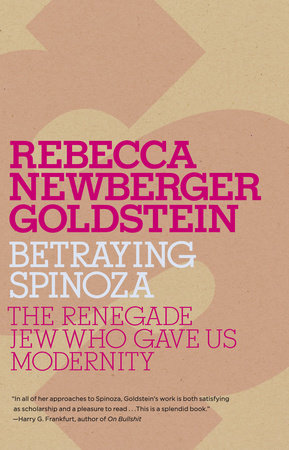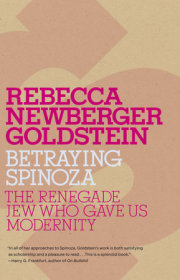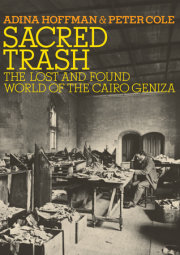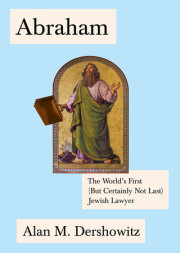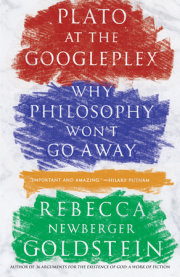Prologue: Baruch, Bento, Benedictus By what right is Benedictus Spinoza included in this series, devoted as it is to Jewish themes and thinkers?
Can the seventeenth-century rationalist, who produced one of the most ambitious philosophical systems in the history of Western philosophy, be considered, by any stretch of interpretation, a Jewish thinker? Can he even be considered a Jew? Benedictus Spinoza is the greatest philosopher that the Jews ever produced, which adds a certain irony to his questionable Jewishness.
He was excommunicated at the age of twenty-three by the Portuguese-Jewish community in which he had been raised and educated. It was a community of refugees from the Spanish-Portuguese Inquisition, a Jewish calamity whose tragic proportions would be exceeded only in the twentieth century. The members of the community were predominantly former Marranos, who had lived on the Iberian Peninsula, mostly in Portugal, as practicing Christians since Judaism had been formally outlawed on the peninsula at the end of the fifteenth century. The word marrano is believed to derive from the old Castilian for “swine,” a particularly apt slur to insult those believed to be concealing Jewish practice beneath Christian performance. The relatively liberal city of Amsterdam provided the conditions for their reconnecting to a Judaism that most of them barely knew. Brutal forces of history had given this community its distinctive tone: ambitious for the material trappings of middle-class stability and yet skittish, anxious; enviably accomplished and cosmopolitan and yet filled with religious intensity, confusion, disillusion, and messianic yearning.
Before his expulsion from it, the hothouse world of Amsterdam’s Sephardim—as Jews who derived from Spain (Sepharad in Hebrew) continue to be called to this day—had been Spinoza’s world as well. Yet when it closed its doors to him, he made no attempt to reenter it or any other Jewish community.
Excommunication, as it was practiced in his community, was not as severe and final a punishment as the word now suggests. The period of isolation from the community (the terms of excommunication did not extend outside of Amsterdam) typically lasted anywhere from a day to several years. The imposed banishment was a tool of chastisement resorted to with quite common frequency, fundamentally a form of public embarrassment with which to exert control over the volatile mix contained within “the Portuguese Nation,” as the Amsterdam Sephardim continued to identify themselves.
Whereas others among the chastised had obediently—and sometimes desperately—sought reconciliation, Spinoza calmly removed himself from any further form of Jewish life. Nor did Spinoza seek out another religion. In particular, he did not convert to Christianity, though it would have been convenient for him to do so. Spinoza opted for secularism at a time when the concept had not yet been formulated.
He supported himself by grinding lenses, which was no lowly menial occupation, as it is often presented to have been in romanticizing versions of the philosopher’s life, but was rather a craft that drew extensively from Spinoza’s serious interest in the science of optics. The quality of his wares was highly valued by other scientists of his day. The important Dutch astronomer Christiaan Huygens, who discovered Saturn’s rings as well as one of its four moons, preferred Spinoza’s lenses to all others. “The [lenses] that the Jew of Voorburg has in his microscopes have an admirable polish,” Huygens wrote to his brother in 1667. The one part of the romantic lens-grinding legend that is sadly true is that the dust from the optical polishing was unhealthy for Spinoza, whose mother and brother had both died young from tuberculosis. He himself succumbed to the disease at the age of forty-four.
Spinoza’s personal life was, as he wished it to be, simple and relatively isolated. There was a small circle of devoted friends, freethinking Christians from various dissenting Protestant circles, who regarded Spinoza as their master and closely studied, and guarded, his thoughts. He combined a Marranoist cautious discretion about revealing his true views to the dangerously narrow-minded with a touching faith in the power of reason to persuade. So he published his Tractatus Theologico-Politicus (The Treatise on Theology and Politics) anonymously, but also hoped that it would convince the powers that be of its main conclusion, which is succinctly stated in the book’s subtitle: Wherein is set forth that freedom of thought and speech not only may, without prejudice to piety and the public peace, be granted; but also may not, without danger to piety and the public peace, be withheld. The book evolves into one of the most impassioned defenses of a free democratic state in the history of political theory, an eloquent plea for the separation of church and state. Spinoza allowed himself to hope that, should its argument for tolerance find its mark, he might be able to publish the work on which he had been toiling for years. The rain of abuse that poured down on the author of the Tractatus, whose true identity was soon an open secret throughout Europe, made him a very dangerous man to even remotely acknowledge, and all but foreclosed the possibility of his publishing his magnum opus in his lifetime. This is The Ethics, a work that makes all the claims for reason that have ever been made.
Some favors came his way. The University of Heidelberg, which had fallen from its perch of previous glory through the prolonged tribulations of the Thirty Years’ War, had no professor of philosophy on staff and, in the name of Karl Ludwig, Elector Palatine, offered him a chair of philosophy. “You will not find elsewhere a Prince more favorably disposed to men of exceptional genius, among whom he ranks you. You will have the most extensive freedom in philosophizing, which he believes you will not misuse to disturb the publicly established religion.” The philosopher delicately declined: “If I had ever had any desire to undertake a professorship in any faculty, I could have wished for none other than that which is offered me through you by the Serene Highness the Elector Palatine, especially on account of the freedom to philosophize that this most gracious Prince is pleased to grant, not to mention my long-felt wish to live under the rule of a Prince whose wisdom is universally admired.” But his instinct for caution had been alerted by the ambiguity of the terms of the offered freedom. “I do not know within what limits the freedom to philosophize must be confined if I am to avoid appearing to disturb the publicly established religion. . . . So you see, most Honorable Sir, that my reluctance is not due to the hope of some better fortune, but to my love of peace, which I believe I can enjoy in some measure if I refrain from lecturing in public.”
Some important intellectual figures of the day made their way to the modest rooms he rented in the Hague in his last years, including the up-and-coming young go-getter Gottfried Wilhelm Leibniz, who would emerge as one of the most dazzling figures in the seventeenth century’s impressive lineup of genius. Leibniz spent a few days with Spinoza, conversing on metaphysics. The only written record of their extensive conversations was a slip of paper on which Leibniz had written down, for Spinoza’s approval, a proof for God’s existence. Leibniz was profoundly influenced by Spinoza’s ideas but sought always to conceal his philosophical debt, and is on record as denouncing the philosopher. When a professor of rhetoric at the University of Utrecht, one Johan Georg Graevius, wrote to Leibniz, castigating the Tractatus Theologico-Politicus as a “most pestilential book,” whose author “is said to be a Jew named Spinoza, but who was cast out of the synagogue because of his monstrous opinions,” Leibniz prudently chimed in with his own diplomatic calumny: “I have read the book by Spinoza. I am saddened by the fact that such a learned man has, as it seems, sunk so low.”
Spinoza remained throughout his life, and well into the eighteenth century, a thinker whom one could admire only in secret, hiding one’s sympathy just as his Marrano antecedents had concealed their wayward Jewishness. Open admiration could destroy even the most established of reputations, well into the eighteenth century’s so-called Age of Reason. In the 1780s, for example, Friedrich Heinrich Jacobi launched a generalized attack on Enlightenment thought by claiming that the late poet Lessing had been a closet Spinozist, a charge sufficient to compromise the entire movement for which Lessing had been a leading spokesman. Jacobi even went after Immanuel Kant and his successors, arguing that “consistent philosophy is Spinozist, hence pantheist, fatalist, and atheist.”
The holy furor aroused by the name Spinoza is in contrast to the man’s predilection for peace and quiet. He confessed himself to have a horror of controversy. “I absolutely dread quarrels,” he wrote an acquaintance, explaining why he had declined to publish a work that contains some of the main themes of The Ethics, titled Short Treatise on God, Man, and His Well-Being. The signet ring he wore throughout his life was inscribed with the word caute, Latin for “cautiously,” and it was engraved with the image of a thorny rose, so that he signed his name sub rosa. One might argue that the very form of The Ethics, written in the highly formalized “geometrical style” inspired by Euclid’s Elements, is partially designed for the practical purpose of keeping out any but the most gifted of readers, rigorously cerebral and patiently rational.
Spinoza’s ambitions on behalf of reason are staggering: he aims to give us a rigorously proved view of reality, which view will yield us, if only we will assimilate it, a life worth living. It will transform our emotional substance, our very selves. The truth shall set us free. His methodology for exposing the nature of reality was inspired by one of the strands that the seventeenth century’s men of science were weaving into what we now refer to as the scientific method, that magnificently subtle, supple, and successful blend of mathematical deduction and empirical induction. Spinoza was keenly interested, and involved in the intellectual innovations that we now look back on as constituting the birth of modern science. His inspiration came from the mathematical component of modern science, not its empiricism. The methodology he believed could reveal it all was strictly deductive, which is not the way that science ultimately went. (Still, there are contemporary physicists and cosmologists who are inspired by the Spinozist ideal of “a theory of everything,” one in which the mathematics alone would determine its truth. String theorists, in particular, pursue physics almost entirely as a deductive endeavor, letting their mathematics prevail over niggling empirical questions. The spirit motivating them is Spinozism, which sometimes makes other scientists question whether what string theorists are up to really qualifies as science at all.)
But if the claims Spinoza makes on behalf of pure reason can strike us as staggering, there are also, staggeringly, a number of propositions that he produced from out of his deductive system that have been, centuries later, scientifically vindicated. A leading neurobiologist, Antonio Damasio, argues in his Looking for Spinoza: Joy, Sorrow, and the Feeling Brain that Spinoza’s view of the relationship between mind and brain, as well as the complicated theory of the emotions that he deduced from it, are precisely what the latest empirical findings support. Spinoza, despite his nonempiricist methodology, is not scientifically irrelevant.
But there are claims that come out of Spinoza’s deductive system that are even more important for our times, more piercingly relevant, than his happening to have produced a stunningly contemporary answer, through pure deductive reason, to the mind-body problem and given us a view of the emotions that science has caught up with, in thinkers like Damasio, after some three hundred years. What Spinoza has to say about the importance of allowing the discovery of nature to proceed unimpeded by religious dogma could not speak more pertinently to some of the raging controversies of our day, including the recurring public debate in America over Darwin’s theory of evolution. The sides are drawn up now much as they were in Spinoza’s own day.
Just as relevant to current concerns, particularly in America, is his fundamental insistence on the separation of church and state. John Locke, who spent some years in Amsterdam, right after Spinoza’s death, associating with thinkers who had known and been influenced by Spinoza, transmitted this insistence to the founding fathers of America. The spirit of Spinoza lives on in the opening words of the First Amendment to the U.S. Constitution, the phrase referred to as the Establishment clause: “Congress shall make no law respecting an establishment of religion.”
Spinoza placed all his faith in the powers of reason, his own and ours. He enjoins us to join him in the religion of reason, and promises us some of the same benefits—while firmly denying us others—that traditional religions promise. Rigorous reason will lead us to a state of mind that is the height of what we can achieve not only intellectually but also, in a sense—the only sense compatible with his rationalism—spiritually. The aim of his ethics is to give us the means to arrive at a “contentment of spirit, which arises out of the . . . knowledge of God.” This is the state of mind dubbed “blessedness” by the man who had been known in three different languages—Hebrew, Portuguese, and Latin—by a name that translates into “blessed”: Baruch, Bento, and Benedictus.
It is hard for us to appreciate the loneliness of Spinoza’s secularized spirituality. For an individual of the early seventeenth century to live outside the bounds of a religious
identity—to aim to be perceived as neither Jew, nor Christian, nor Moslem—was all but unthinkable; and, in fact, Spinoza did continue to be called, with predictable disdain, a Jew. Huygens, for example, never refers to Spinoza by name in his letters, even though the two often conversed on such fields of mutual interest as mathematics and optics; but rather Spinoza is always “the Jew of Voorburg” or, even more belittlingly, “our Israelite,” “our Jew.”
The social frame of reference enclosing every individual of the premodern era was inherently religious. Spinoza’s choice was an instance of a principle that had yet to be discerned in even the vaguest outline. Part of the horror he invoked throughout Europe derived from the radical stance he assumed simply by pursuing a life with no religious affiliation. Though the Romantic poet Novalis called him, and for good reason, “God-intoxicated,” he was also routinely excoriated as an atheist. He seemed to have been genuinely dismayed by the charge, though his conception of God is sufficiently peculiar—and subtle—that one can see how his constant talk of God might strike even us today as disingenuous, yet another old Marranoist trick of hiding one’s unacceptable beliefs under formulaic insincerities.
Copyright © 2006 by Rebecca Goldstein. All rights reserved. No part of this excerpt may be reproduced or reprinted without permission in writing from the publisher.

